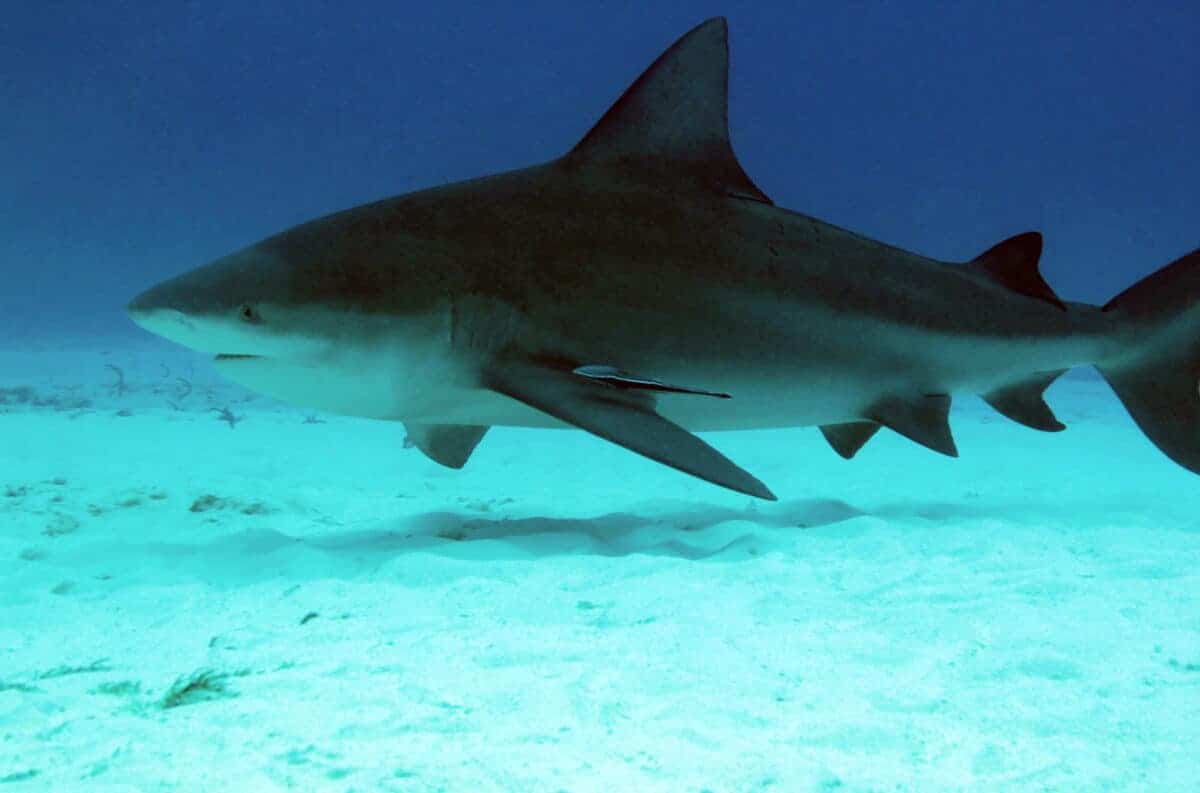Sharks are often associated with the salt-laden waves of the ocean, their fins cutting through the sea like gliding blades. However, one remarkable species defies this oceanic stereotype— the Bull Shark (Carcharhinus leucas). Known for its adaptability, the Bull Shark sets itself apart by being the only shark capable of thriving in both salty ocean water and fresh inland waters. Journey with us as we explore this fascinating creature, its unique traits, and the diverse habitats it calls home.
Introducing the Bull Shark

The Bull Shark is a robust and agile predator, often found in coastal waters and known for its unique ability to traverse into freshwater environments. Recognizable by its stout body and blunt, rounded snout, it is one of the most versatile sharks when it comes to habitat.
Natural Habitat and Distribution

While Bull Sharks inhabit shallow waters along coasts worldwide, they can also be found in rivers and lakes, far from any salt water. Preferring warm, temperate seas, they are commonly sighted along coastlines of the Atlantic and Indian Oceans. However, their range extends inland, reaching as far as the Mississippi River in the United States and the Amazon Basin.
Incredible Adaptability

The Bull Shark’s ability to survive in freshwater is a rare trait among sharks. This adaptability is due to their sophisticated osmoregulatory system, which allows them to alter their body’s salt levels, keeping it balanced whether swimming in saltwater or freshwater.
Unique Physical Characteristics

The Bull Shark exhibits a powerful, muscular build with a typically pale color that allows them to blend seamlessly into the sandy and murky environments they frequent. With a length ranging from seven to eleven feet and weighing up to 500 pounds, they’re formidable hunters capable of swift, agile movements in the water.
Diet and Hunting Techniques

As opportunistic feeders, Bull Sharks possess a diverse palate. Their diet includes bony fish, smaller sharks, and even birds. Equipped with keen senses and acute stealth, they can exploit nearly any nearby food source, making them efficient hunters in both marine and freshwater settings.
Reproductive Behavior

Bull Sharks are viviparous, meaning females give birth to live young rather than laying eggs. These young sharks, called pups, typically remain in safe nursery areas close to shore or in rivers until they are large enough to venture into deeper waters.
Interactions with Humans

While Bull Sharks are not typically aggressive toward humans, their natural curiosity and proximity to human habitats can occasionally lead to encounters. Nevertheless, understanding and respecting their space can mitigate potential risk.
Ecological Importance

As apex predators, Bull Sharks play a pivotal role in maintaining the ecological balance within their habitats. They help regulate fish populations and remove weak or sick individuals, contributing to a healthy aquatic environment.
Conservation Concerns

Despite their adaptability, Bull Sharks face threats from human activities such as overfishing, habitat destruction, and pollution. Conservation efforts aim to protect these sharks and manage their habitats sustainably to ensure their future survival.
Inland Voyages Remarkable Journeys

One of the most fascinating aspects of Bull Sharks is their ability to undertake long voyages inland. They have been found thousands of miles upstream in river systems like the Amazon, Senegal, and Mississippi, showcasing their extraordinary capacity to navigate diverse aquatic landscapes.
Safety Measures for Water Recreation

For those enjoying water activities in areas potentially inhabited by Bull Sharks, staying informed and taking precautionary steps, such as avoiding swimming alone and staying out of the water at dawn or dusk, can enhance safety and reduce the likelihood of unwanted encounters.
Appreciating the Bull Shark’s Role

The Bull Shark, with its dual aptitude for saline and freshwater environments, serves as a captivating example of nature’s adaptability. By learning about these resilient creatures and appreciating their ecological role, we foster a deeper respect for the rich tapestry of life thriving in our aquatic ecosystems.
Conclusion:

The Bull Shark’s distinctive place as the only shark capable of conquering freshwater ecosystems illustrates an incredible evolutionary success story. Their adaptability, power, and importance in the aquatic world remind us of the complexity and interconnection of marine life. As we delve into the mysteries of the natural world, the Bull Shark stands as a testament to nature’s boundless adaptability, deserving both our admiration and protection.
- 6 Ways Bald Eagles Defend Their Territory And 3 That Fail - August 19, 2025
- 11 Dog Behaviors That Annoy Even the Most Patient Owners - August 19, 2025
- How Wildlife Corridors Help Animals Migrate Safely - August 19, 2025

